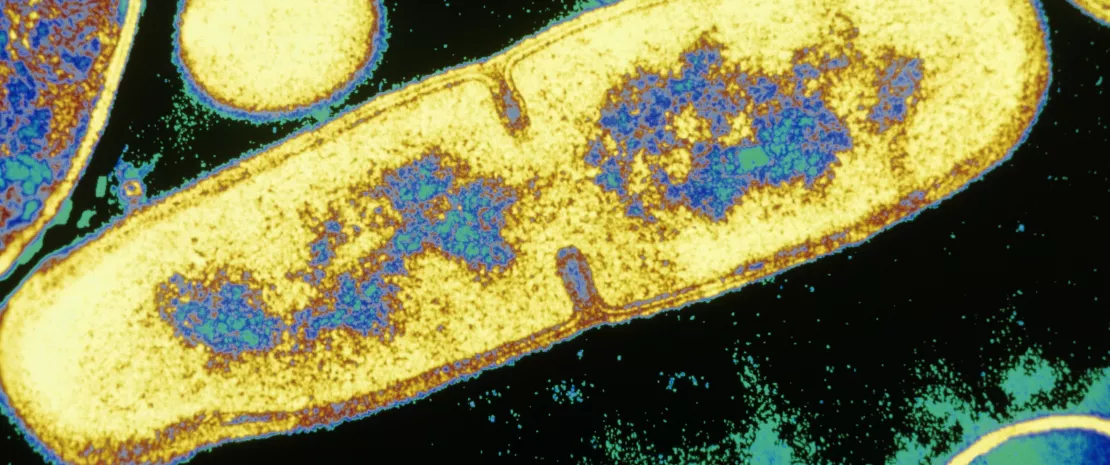Human microbiomes: reservoirs of antimicrobial peptides
Human microbiomes are believed to be reservoirs of antimicrobial peptides as effective as some antibiotics currently in use, with some potentially sparing our commensal bacteria. 1
Sources
This article is based on scientific information

About this article
“One of the most serious threats to global health, food security, and development”. This is how the WHO 2 describes antibiotic resistance. (sidenote: Antimicrobial peptides (AMPs) Antimicrobial peptides (AMPs) are short sequences of amino acids widely present in a variety of organisms, including bacteria, plants, amphibians, insects, fish, and mammals. They are capable of disrupting microbial growth, most often by interfering with cell wall integrity. Explore https://www.sciencedirect.com/topics/agricultural-and-biological-sciences/antim… ) are seen as a promising solution to the problem. However, they remain in short supply Some examples include:
- bacitracin produced by Bacillus licheniformis is used to treat eye and skin infections
- colistin produced by Paenibacillus polymyxa var. collistinus is used to treat pneumonia in cystic fibrosis patients
- polymyxin B produced by Paenibacillus polymyxa is used to treat topical infections
The study described below sought to identify new candidates, based on 1,773 genomes from the human microbiomes of the skin, mouth, gastrointestinal system, and vagina of 263 healthy women participating in the NIH Human Microbiome Project. 3
323 potential candidates
The team identified 323 potential candidates, which the authors called SEPs ( (sidenote: SmORF (Small open reading frames) Short sequences encoding small peptides of less than 100 amino acids capable of mediating key physiological functions in humans and animals. Explore Couso JP, Patraquim P. Classification and function of small open reading frames… ) -encoded peptides).
Of these, 78 were selected on the basis of three criteria (antimicrobial potential, diversity of families represented, and ease of synthesis). These were then synthesized and tested against:
- 11 clinically relevant pathogen strains (Acinetobacter baumannii, E. coli, Klebsiella pneumoniae, Pseudomonas aeruginosa, Staphylococcus aureus, Enterococcus faecalis, Enterococcus faecium)
- 13 of the most common commensal bacteria of the GI tract (belonging to four phyla: Verrucomicrobia, Bacteroidetes, Actinobacteria, et Firmicutes)
Unlike AMPs, SEPs can also target commensals.
70.5% show antimicrobial activity
In all, 55 of the 78 SEPs synthesized (70.5%) displayed in vitro antimicrobial activity against at least one pathogenic or commensal bacterium:
- 33 of the 78 SEPs destroyed at least one of the 11 pathogens tested; S. aureus was the only pathogen not targeted by any of the 78 SEPs synthesized;
- 45 of the 78 SEPs displayed mild antibacterial activity against commensals.
The five most promising SEPs (high activity against pathogens, limited or no activity against commensals) were (sidenote: Skin and GI bacteria Faecalibacticin-3 (Faecalibacterium prausnitzii), fusobacticin-2 (Fusobacterium nucleatum), keratinobacin-1 (Keratinibaculum paraultunense), staphylococcin-2 (Staphylococcus capitis), and prevotellin-2 (Prevotella copri) ) . Les actions des différents SEP se révélaient souvent synergiques.
In vivo (murine model), the best candidate, prevotellin-2 (P. copri), proved to be as effective as the reference antibiotic (polymyxin B) in terms of reducing the bacterial load, with no noticeable toxicity for mice infected with A. baumannii.
6 things you should know about antibiotics
Focus on the cytoplasmic membrane
To determine their mechanisms of action, antimicrobially active SEPs were studied from every angle. Their antimicrobial action seems to target the cytoplasmic membrane of the bacteria they depolarize (whereas conventional AMPs and EPs generally target the outer membrane).
3 patterns of antagonism
The various SEPs act via three patterns of antagonism:
• Intraspecies (by combatting competition from other strains)
• Interspecies within the same body site (e.g. faecalibacticin-3 produced by gut bacterium Faecalibacterium prausnitzii from the Firmicutes phylum targets several bacteria from the Bacteroidetes phylum)
• Interspecies targeting bacteria from another body site (staphylococcin-2 produced by skin bacterium Staphylococcus capitis is highly active against several phyla of gut bacteria)
In addition to combating pathogens, SEPs may therefore remodel microbiomes.






